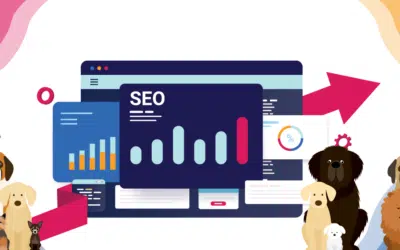In the ever-evolving landscape of healthcare, the ability to attract and retain patients or customers is of utmost importance. Marketing automation has emerged as an invaluable tool for healthcare organizations, empowering them to effectively engage customers, streamline operations, and achieve sustainable growth. This article delves into five compelling examples of marketing automation that elevate stakeholder communication, enhance operational efficiency, optimize lead nurturing, personalize patient experiences, and measure marketing efforts. By exploring these scenarios, healthcare professionals and marketers can glean valuable insights to implement and refine their own strategies, ultimately fostering improved patient engagement, heightened efficiency, and enhanced business success.
Marketing Automations Return on Investment (ROI)

1. Audience Segmenting and Smart Lists
One of the most basic types of automated marketing is to segment your database of contacts using defined parameters and actions. For marketing purposes, segmenting audiences is sometimes referred to as building smart lists because it allow for more targeted emails to be sent to only those contacts appropriate to each piece of content.
Most companies have many different types of contacts and while it’s simpler to think they all are interested in the same content, in most cases they are not. An example could be a healthcare staffing company. Very often they work closely with healthcare organizations to provide staffing as well as with nurses who are interested in filling staff positions. Certainly the same type of content does not always apply to both groups and having a single monthly newsletter that you send to everyone in your database is not the best use of email marketing. With a CRM like HubSpot you can specify the criteria that adds someone to a certain list or doesn’t.
In the healthcare staffing example, if you have a form on your website for new, interested staff, a submissions can automatically segment these contacts into a specific list. This allows you to later send staffing focused emails to only people that you know are interested in staffing positions and not the healthcare executives in your database.
Segmenting your audience is vital to ensure that your healthcare marketing emails reach those who genuinely want to receive them. It also helps avoid wasting efforts on uninterested subscribers. Here are some tips to enhance your segmentation strategy and automate the process:
- Segment your subscribers into groups based on shared characteristics such as age, location, or gender. This allows you to better target your intended audience and optimize your marketing efforts with automation.
- Automate the process by breaking it into smaller segments to generate personalized automated emails tailored to each recipient.
- Create a dedicated segment exclusively for existing customers and proactively engage with them through automated newsletters, exclusive promotions, referral emails, and complimentary trial opportunities. This targeted and automated approach will foster stronger connections and ensure they feel valued and appreciated.
- Create lists and segments based on actions, such as filling out a specific form on your website, visiting a specific page or engagement rates.
2. Email Drip Campaigns Based on Website Form Fills
An email drip campaign is a common marketing technique that has proven success across many industries. A drip campaign essentially consists of three parts. 1) Defining the email content that you want to send 2) Defining the schedule intervals that you want to send the content. 3) Defining the enrollment criteria that “triggers” your drip campaign to go to a specific contact.
In the form fill example, filling out a specific form is the trigger. Many companies including health tech and SaaS companies offer a “schedule a free demo” call-to-action on their website. In an email drip campaign, the first email could be an invitation to book time on a salesperson’s calendar. If the potential lead does not book a call, a second email could be sent three days later urging them to book a meeting while highlighting the benefits of the product. A third email could be sent a week later showcasing a recent customer’s success story. A fourth email could be sent a month later showcasing product highlights with another invitation to book a demo meeting. With marketing automation, the drip campaign can be suspended if the contact replies, forwarded to the appropriate sales person and/or switched to a new campaign more appropriate to the response.
3. Automations Based on Purchases or Webpage Visits
Have you ever visited a website only to receive an email later mentioning that you left something behind in your cart? With marketing automation, more advanced emails can be sent to contacts based on items purchased or webpage visits. Members of your data base who visit your website can trigger strategic automations to help move them through the sales funnel. Perhaps a customer has not made a purchase in more than a year. This interaction (or lack thereof) could trigger a specific email urging them to come back. Or perhaps you want to target your best customers with a unique offer based on their purchase history. You can even send emails urging reviews or restocking their supplies.
Another example is sending an email highlighting a specific feature about your products and services based on the webpage they visited. Knowing that a lead landed on your webpage to view a specific page provides valuable information about them that savvy marketers can use to convert them into a customer.
With marketing automation there a many ways to engage customers based on the actions they’ve taken. Get in touch with us to learn about the most strategic marketing automations for your business.
4. Automations for Better Targeted Digital Advertising
Digital advertising retargeting is a highly effective marketing automation technique that empowers healthcare companies to reconnect with prospects who have shown interest but haven’t yet converted. By leveraging the power of your CRM, website and digital advertising platforms, healthcare organizations can automate the delivery of personalized ads across various platforms. An example of digital advertising automated marketing could include sending a very specific service ad to anyone in your database who visited the corresponding page on your website. So let’s say your company sells a Health tech SaaS tool. There may be many features of that tool that a potential customer could be interested in. Imagine serving targeted ads to anyone who visited the page on your website highlighting a specific feature with an add for that corresponding feature. Another example is sending ads to customers who purchased a specific product. An automated digital advertisement could display for customers who are in need of stocking up based on time since they’ve ordered or quantity amount. This data-driven approach enables marketers to create tailored ad campaigns that resonate with their target audience. By extending their reach, maximizing conversions, and re-engaging with prospects who have already expressed interest in their services, healthcare organizations can optimize their marketing efforts and cultivate lasting relationships with potential patients.
5. Using Marketing Automation for Social Media
In the digital era, social media platforms have become essential for effective healthcare marketing strategies. With the advent of marketing automation, healthcare companies can effortlessly manage and optimize their social media presence, ensuring maximum reach and engagement. By utilizing automation tools, healthcare providers can easily schedule and publish content, monitor performance metrics, and make data-driven decisions to refine their marketing strategies further.
Automation tools not only streamline the process of planning and scheduling social media posts across platforms but also ensure a consistent and captivating experience for the audience. This fosters stronger relationships between healthcare providers and their target audience, allowing them to effectively communicate their expertise, services, and innovative solutions to a broader scope of individuals in need. Moreover, social media platforms provide an avenue for engaging in meaningful conversations with patients, listening to their feedback, and addressing their concerns promptly. This active participation not only establishes healthcare providers as trusted authorities in their respective fields but also positions them as thought leaders.
Discover how marketing automation can transform your healthcare organization! Learn from real-world examples and gain valuable insights to enhance patient engagement, operational efficiency, and business success. Contact Conway Marketing Group today to get started.
Sources: Nucleus Research, Top 25 statistics about marketing automation software 10/2020



